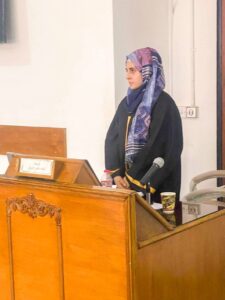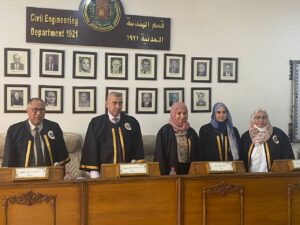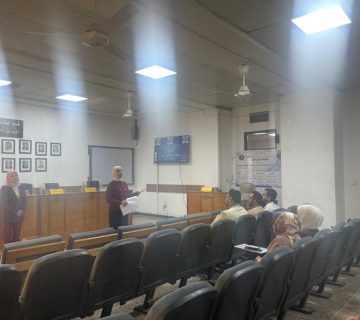تم مناقشة رسالة الماجستير الطالبة امنه عامر فاروق في قسم الهندسة المدنية عن البحث الموسوم Design and Operational Evaluation of The Liquid Petroleum Gases System in Multi-Story Residential Buildings
في يوم 2022/7/18 الموافق يوم الاثنين وبأشراف د. باسم حسين خضير العبيدي
وقد تشكلت لجنة المناقشة من السادة
- أ.د. زينب بهاء محمد استاذ جامعة التكنلوجيا كلية الهندسة رئيسا
- أ.د. سرى كريم علي استاذ مساعد جامعة بغداد كلية الهندسة عضوا
- أ.م.د. محمد صادق استاذ مساعد جامعة بغداد كلية الهندسة عضوا
- .أ.د. باسم حسين خضير استاذ جامعة بغداد كلية الهندسة مشرفاً
تناول البحث
Abstract
Liquid petroleum gas (LPG) is one of the clean gases that widely used in household purposes in developing countries especially in cooking due to ease usage lightness and low cost but one of its disadvantages is that it ignites quickly in the event that there is an ignition source near it. LPG is made of hydrogen and carbon atoms and consists mainly of propane in the form of C3H8 and other gases in the secondary form. Two study areas were taken in the thesis to implement the objectives of the study case, the first, in Rusaf, Baghdad residence complex and the second, in Karkh, Ibn Frnase complex. The results include several topics that are summarized as follows:
Result showed that design of LPG using the pipe flow program with two systems (up-feed and down-feed) for a residential building consisting of twelve floors and four apartments for each floor that showed difference in pipe distribution and diameters. The conclusion is that the up-feed system is the best in design and less maintenance rather than the down-feed due to the down-feed system caused operational problems as leakage and explosions. The LPG design results by applying three scenarios depending on the percentage of simultaneous operation of the cookers appliances (100, 75 and 50) %, in whole building, showed that the gas flow and velocity decrease as the consumption is slight with changes in pipe diameters. The designing 100% depreciation is taken into consideration, but in fact, the most common depreciation is 50%.
The LPG design and analysis for site network (Baghdad complex) using two tanks with an operating pressure of 6 bar and the gas flow for all complex is 24960 ft3/hr for each tank and a network of pipes, the main pipe with a diameter of 3 in (80 mm) with high density polyethylene (HDPE) material SDR11, lateral pipes with a diameter of 3 in (80 mm), HDPE material with standard diameter ratio (SDR)11 and service diameters with a diameter is between 2 in (50mm) to 1 in (25 mm), HDPE material SDR11.The design mathematical result is compatible with the results of the program.
The LPG network evaluation for Ibn France complex with a total gas flow 137280 ft3/hr using storage tanks 2 x70 m3 with an operation pressure 6 bar based on eight hours per day consumption. The actual design site shown the tank size volume is 2 x50 m3 that enough to consumption maximum daily six hours per day. The evaluation results showed a difference in the exist design with actual tank site as diameters of pipes and head loss.
The sustainability is divided into main goals and secondary goals include that environmental sustainability, aesthetic sustainability, social sustainability, and economic sustainability were applied to a residential building in one of the residential complexes. The results showed the total sum of main goals and secondary goals is 86% from the partition of percentage environmental sustainability as a whole in the building by 100%, while economic and social sustainability is applied at a rate of 72%. Aesthetic and environmental sustainability is achieved in the building so the sustainability used more attention which are achieved at an acceptable rate and can be developed in the long term.











